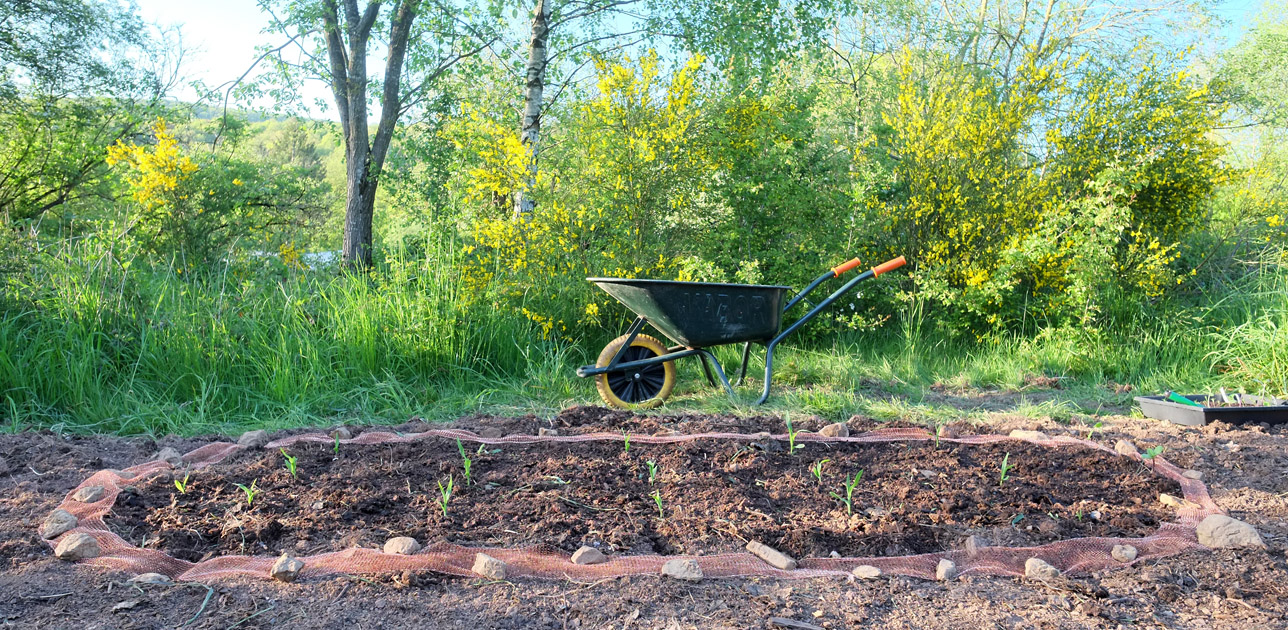Permaculture (from permanent + agriculture) is a bit of a buzz word today. It is widely used and seems to mean a lot of different things to different people. As a very short definition, Patrick Whitefield said it meant “…taking natural ecosystems as the model for our own human habitats.” (The Earth Care Manual, 2004)
In the garden this means mimicking natural ecosystems, such as forests, which allows the gardener to achieve sufficient density of production, while relying less on external inputs such as fertiliser, energy and irrigation. But systems are complex, and nature is hard to copy. Natural ecosystems are characterised above all by diversity of species and beneficial relationships – relationships between plants and animals and microbes, but also with inorganic components such as water and minerals, light and shade. Getting these relationships right is a challenge.
The key to permaculture is design. You begin by observing your site through a full cycle of seasons, and longer. You then plan improvements and interventions (such as raised beds and swales) and position the elements of the garden in response to your observations. The main aim is to minimise the amount of time you will spend in the future running around with wheelbarrows, hoes and hosepipes, while maximising the natural productivity of your land.
But human habitats include more than gardens. Permaculture also relates to the built environment and to relationships between people. On a house, for example, permaculture means adapting the architecture to fully exploit free resources like the sun, wind and rain, and making the most of orientation and location. Good examples include building a greenhouse against a south-facing wall to maximise heat retention in winter, or using dormer windows in roof extensions: vertical window panes let in low winter sun when you need the warmth, but overhanging eaves keep out the hot, high sun in summer. This can save a lot of energy compared to more common skylight windows, which do the opposite.
The originator of Permaculture, Bill Mollison, also said that the word means permanent + culture (not just agriculture). Referring to human relationships, he said “…cultures cannot survive for long without a sustainable agricultural base and landuse ethic.” So the third important pillar of permaculture is the fair distribution of production through local, equitable and community-based economies. In short, everyone should have a fair share of the Earth’s bounty, while the planet remains healthy and all people have the chance of a reasonable standard of living.
Some of the influences (further reading and links)
The ideas I find inspiring come from various sources. Above all, I should mention the Ferme Larock in Neupré, near Liege, where I learned about biodynamic horticulture from the market gardener Peter van Mol. With a small and happy heard of cows and a cheese-making business, as well as the vegetables and fruit, this is a traditional, mixed organic farm.
Permaculture was first developed as a system in the 1970s in Australia, by Bill Mollison and David Holmgren. Since then, several people have adapted their approach or developed similar ideas in the European context. They include Patrick Whitefield in the UK and the Austrian Sepp Holzer, who used his experience and intuition to farm vegetables productively at high altitude in the Alps near Salzburg.
Another address for inspiration is the farm of Bec Hellouin in Normandy, where Nina and I attended a permaculture course. At Bec Hellouin, Perrine and Charles Herve-Gruyer have borrowed ideas from 19th century Parisian market gardeners, as well as Bill Mollison and others, to develop their own ecological agriculture. Today, their farm is a highly productive green idyll. Closer to home, we are also impressed by the work being done by Jean-Cédric Jacmart and his cooperative at the Ferme de Desnié in Theux.
Other people who have shared important and uplifting ideas in this field include Masanobu Fukuoka, in Japan, the American Elliot Coleman, and Pierre Rhabi in France.
See also…
